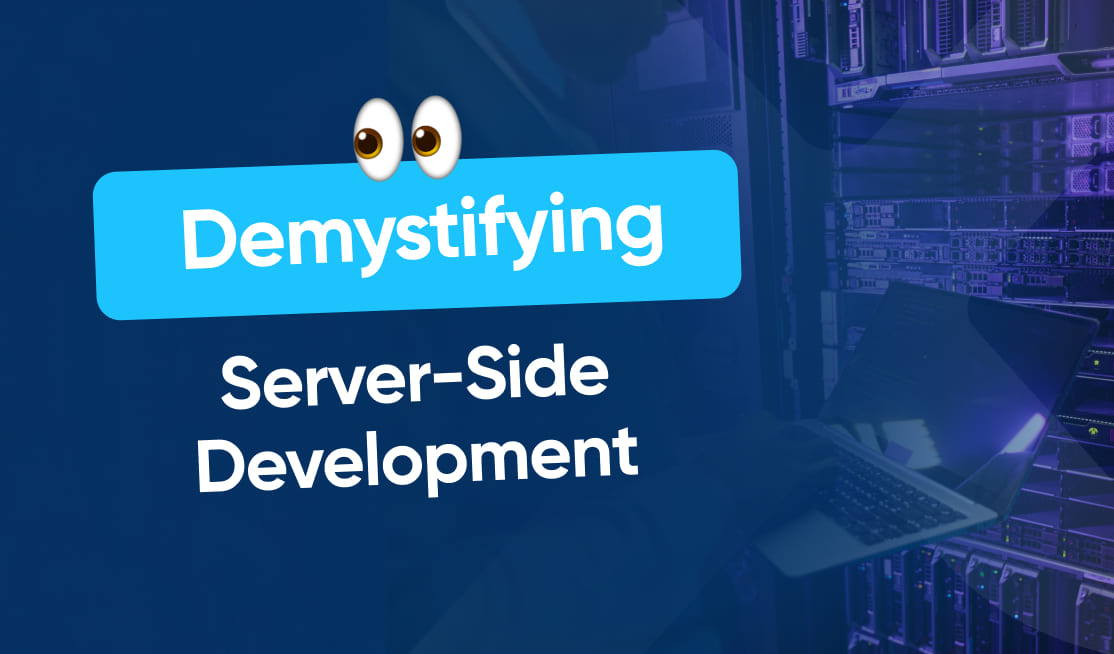
In today’s increasingly digital world, back-end technologies play a crucial role in powering websites and web applications. These technologies, such as PHP, Python, and Node.js, drive the functionality and performance of websites, making them an integral part of web development.
Introduction to Back-End Technologies
Before delving into the specifics of each technology, it’s important to understand what back-end technologies are and why they are essential to the web development process.
When you visit a website, you interact with the user interface, which is the front-end of the website. However, behind the scenes, there is a complex system at work that enables the website to function properly. This is where back-end technologies come into play.
Defining Back-End Technologies
Back-end technologies refer to the server-side components of a website or web application. They are responsible for handling data processing, server-side logic, and integration with databases. In simpler terms, back-end technologies make websites work by connecting the front-end user interface with the server and databases.
Imagine you are using an e-commerce website to purchase a product. When you click the “Add to Cart” button, the back-end technology processes this action, updates the shopping cart, and stores the relevant information in a database. It also handles the secure payment process, verifies the transaction, and sends a confirmation email to your inbox. All of this happens seamlessly, thanks to the back-end technologies working behind the scenes.
Importance of Back-End Technologies
The importance of back-end technologies cannot be overstated. They are responsible for managing user data, ensuring security, and handling complex business logic. Without back-end technologies, websites would lack functionality and be unable to process user input or provide dynamic content.
Consider a social media platform like Facebook. Without back-end technologies, it would be impossible to create user accounts, store and retrieve posts, handle friend requests, or implement privacy settings. Back-end technologies enable all of these features and more, making the platform functional and user-friendly.
Additionally, back-end technologies enable seamless integration with various databases, making it easier to store, retrieve, and manipulate data. With the right back-end technology, developers can build robust and scalable web applications that meet the demands of today’s users.
Furthermore, back-end technologies play a crucial role in ensuring the security of websites and web applications. They implement authentication and authorization mechanisms, protect sensitive data, and prevent unauthorized access. Without these security measures in place, websites would be vulnerable to attacks and data breaches.
In conclusion, back-end technologies are the backbone of websites and web applications. They handle the behind-the-scenes processes, enable functionality, and ensure security. Without them, the web as we know it would not exist.
Exploring PHP as a Back-End Technology
One widely used back-end technology is PHP, which stands for Hypertext Preprocessor. It is a server-side scripting language known for its simplicity and versatility.
PHP allows developers to embed code within HTML, making it easy to integrate dynamic content into web pages. It offers a wide range of built-in functions and libraries, simplifying common web development tasks.
Moreover, PHP has a large and active community, providing extensive documentation and resources for developers. This makes it an accessible choice for both beginners and experienced programmers.
When it comes to the basics of PHP, it is important to understand its syntax and structure. PHP code is typically enclosed within tags, allowing it to be seamlessly integrated with HTML. This makes it easy to switch between PHP and HTML code within the same file.
PHP also supports a wide range of data types, including integers, floats, strings, arrays, and booleans. It also provides operators for performing arithmetic, comparison, and logical operations.
One of the key advantages of PHP is its wide adoption. It is estimated that over 79% of websites that use a server-side language choose PHP as their back-end technology. This means that there is a vast pool of PHP developers and resources available, making it easier to find support and solutions to common problems.
Another advantage of PHP is its extensive community support. There are numerous online forums, communities, and websites dedicated to PHP, where developers can ask questions, share knowledge, and collaborate on projects. This vibrant community ensures that PHP remains up-to-date and relevant in the ever-evolving world of web development.
PHP is also known for its compatibility with various operating systems and databases. It can run on popular platforms such as Windows, Linux, and macOS, making it a versatile choice for developers. Additionally, PHP supports a wide range of databases, including MySQL, PostgreSQL, Oracle, and SQLite, allowing developers to work with their preferred database management system.
However, PHP is not without its drawbacks. One common criticism of PHP is its lack of strict typing. Unlike languages such as Java or C#, PHP does not enforce strict type checking, which can lead to potential bugs and errors. Developers need to be cautious and ensure proper validation and sanitization of user input to prevent security vulnerabilities.
Another criticism of PHP is its inconsistent function naming conventions. Over the years, PHP has evolved and grown, resulting in a mix of different naming styles for functions and methods. This can make it challenging for developers to remember and use the correct function names, especially when working with multiple projects or frameworks.
Despite these drawbacks, PHP remains a popular choice for web development due to its ease of use and extensive ecosystem of frameworks and libraries. Frameworks like Laravel, Symfony, and CodeIgniter provide additional structure and functionality to PHP applications, making development faster and more efficient.
In conclusion, PHP is a powerful and versatile back-end technology that allows developers to create dynamic and interactive web applications. Its simplicity, wide adoption, and extensive community support make it an accessible choice for developers of all levels of experience. While it has its drawbacks, PHP continues to evolve and improve, ensuring its relevance in the ever-changing landscape of web development.
Delving into Python for Back-End Development
Python, a high-level programming language, has gained significant traction in recent years for its simplicity and readability. Although it is often praised for its versatility in various domains, it also shines as a back-end technology.
When it comes to back-end development, Python offers a wide range of features and benefits. Its syntax emphasizes readability, making it easier to write and maintain code. This is especially important in the back-end, where complex algorithms and logic are often implemented. With Python, developers can focus on solving problems rather than getting lost in convoluted syntax.
One of the key strengths of Python is its extensive standard library and rich ecosystem of third-party packages. These resources provide developers with a vast array of tools and functionalities to build robust and scalable back-end systems. Whether it’s handling database operations, implementing authentication mechanisms, or integrating with external APIs, Python offers a solution for almost every requirement.
Understanding Python
Python’s support for various frameworks, such as Django and Flask, further enhances its capabilities in back-end development. These frameworks provide a structured and efficient way to build web applications, handling common tasks like routing, session management, and form validation. With Django and Flask, developers can rapidly develop and deploy web applications, while adhering to best practices in code organization and maintainability.
Furthermore, Python’s versatility extends beyond web development. It excels in tasks requiring data manipulation and analysis, making it a popular choice for scientific computing and machine learning. With libraries like NumPy, Pandas, and Scikit-learn, Python provides powerful tools for data scientists and researchers to explore and analyze complex datasets.
Pros and Cons of Python
Python boasts several advantages that make it an attractive choice for back-end development. Its simplicity and readability make it easy to learn and collaborate on projects. Additionally, Python has a large and active community, which means developers can find support, resources, and libraries for almost any problem they encounter.
Another advantage of Python is its cross-platform compatibility. Whether you’re developing on Windows, macOS, or Linux, Python code can run seamlessly on different operating systems. This makes it easier to deploy and scale applications across different environments.
However, it’s important to note that Python’s performance can be slower compared to lower-level languages like C++. This is due to Python’s interpreted nature, where code is executed line by line rather than compiled. While this may not be a significant concern for most back-end applications, it’s something to consider for performance-critical tasks.
In addition, Python’s Global Interpreter Lock (GIL) can limit multi-threading performance in certain scenarios. The GIL ensures that only one thread executes Python bytecode at a time, which can impact the performance of CPU-bound tasks. However, it’s worth noting that the GIL primarily affects multi-threading and not multi-processing. By utilizing multiprocessing techniques, such as the multiprocessing module, developers can overcome the limitations of the GIL and achieve parallel execution.
In conclusion, Python offers a powerful and versatile platform for back-end development. Its simplicity, extensive library ecosystem, and support for frameworks make it an excellent choice for building robust and scalable web applications. While it may have some performance considerations, these can often be mitigated through optimization techniques and leveraging multiprocessing capabilities. Whether you’re a beginner or an experienced developer, Python provides a solid foundation for diving into the world of back-end development.
Unpacking Node.js in Back-End Development
Node.js is a platform built on Chrome’s JavaScript runtime, allowing developers to build scalable network applications with JavaScript on the server side.
What is Node.js?
Designed with efficiency and scalability in mind, Node.js leverages an event-driven, non-blocking I/O model. This enables it to handle a large number of concurrent connections, making it an ideal choice for real-time applications and microservices architecture.
Strengths and Weaknesses of Node.js
Node.js offers several advantages, including its ability to use JavaScript both on the front-end and back-end, simplifying development workflows. Its vast ecosystem of packages, known as npm, provides numerous ready-to-use modules for rapid development.
However, Node.js may not be the best choice for CPU-intensive tasks due to its single-threaded nature. While it can handle high loads with ease, it may struggle with computationally heavy operations. In such cases, careful consideration should be given to balancing workloads or offloading CPU-bound tasks to a different technology.
Comparing Back-End Technologies
Choosing the right back-end technology is a crucial decision for any development project. Before making a choice, it’s essential to consider the strengths and weaknesses of each technology and how they align with the project requirements.
PHP vs Python vs Node.js
While PHP, Python, and Node.js all have their merits, they excel in different areas. PHP shines in web development due to its simplicity and extensive ecosystem of frameworks like Laravel and Symfony.
Python, on the other hand, offers a clean syntax and is favored for tasks involving data manipulation and scientific computing. Its frameworks, such as Django and Flask, provide a powerful foundation for building complex web applications.
Node.js, with its ability to handle concurrent connections and real-time applications, is often the go-to choice for building scalable network applications and microservices architecture.
Choosing the Right Back-End Technology
Ultimately, the choice of back-end technology depends on the specific project requirements, team expertise, and scalability needs. It is crucial to carefully evaluate the strengths and weaknesses of each technology and consider factors such as performance, community support, and compatibility with existing systems.
Regardless of the technology chosen, understanding back-end technologies and their capabilities is essential for building robust, efficient, and scalable web applications that meet the demands of modern users.


